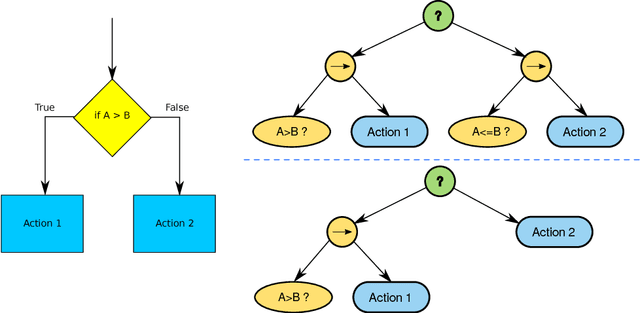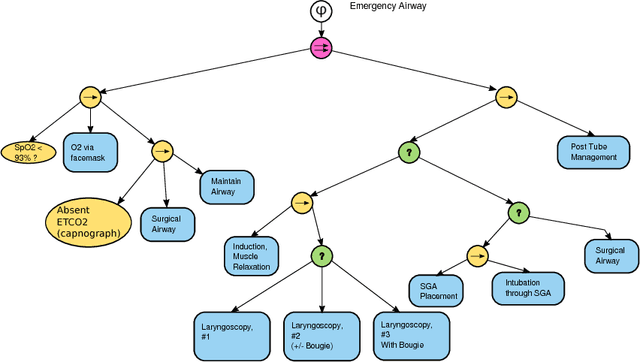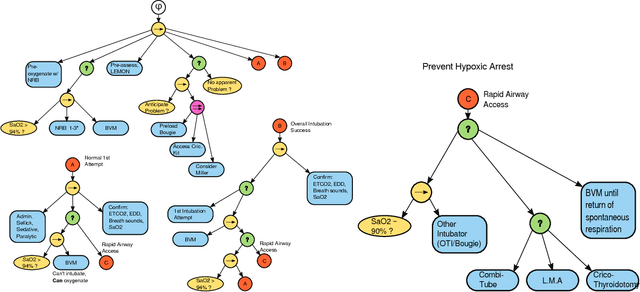Behavior Trees as a Representation for Medical Procedures
Paper and Code
Aug 27, 2018



Objective: Effective collaboration between machines and clinicians requires flexible data structures to represent medical processes and clinical practice guidelines. Such a data structure could enable effective turn-taking between human and automated components of a complex treatment, accurate on-line monitoring of clinical treatments (for example to detect medical errors), or automated treatment systems (such as future medical robots) whose overall treatment plan is understandable and auditable by human experts. Materials and Methods: Behavior trees (BTs) emerged from video game development as a graphical language for modeling intelligent agent behavior. BTs have several properties which are attractive for modeling medical procedures including human-readability, authoring tools, and composability. Results: This paper will illustrate construction of BTs for exemplary medical procedures and clinical protocols. Discussion and Conclusion: Behavior Trees thus form a useful, and human authorable/readable bridge between clinical practice guidelines and AI systems.
 Add to Chrome
Add to Chrome Add to Firefox
Add to Firefox Add to Edge
Add to Edge